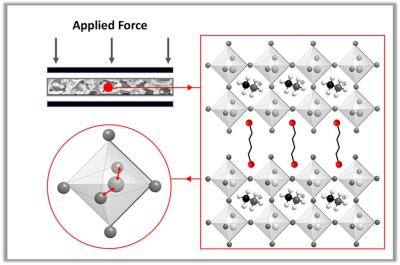Hybrid perovskites show piezoelectric properties due to polarization and centro-symmetry breaking of PbX6 pyramids (X = I-, Br-, Cl-). Researchers from The Hebrew University of Jerusalem, Polish Academy of Sciences and Nanyang Technological University recently examined the piezoelectric response of quasi-2D perovskites using various barrier molecules: benzyl amine (BzA), phenylethyl amine (PEA), and butyl diamine (BuDA).
Utilizing piezoelectric force microscopy measurements, the team determined the piezoelectric coefficient (d33) where BuDA exhibits a substantial response with values of 147 pm V–1 for n = 5, better than the other quasi-2D and 3D perovskite counterparts. Density functional theory calculations revealed distorted bond angles in the PbBr6 pyramids for quasi-2D perovskites, enhancing symmetry breaking.
Additionally, polarizabilities and dielectric constants, derived from ab initio many-body perturbation theory, were highest for BuDA, followed by PEA and BzA, aligning with experimental results.
The scientists demonstrated pressure sensor performance, emphasizing the quicker capacitance decay time of the quasi-2D perovskite based on BuDA. This research highlights the impact of perovskite dimensionality on piezoelectricity, paving the way for the development of sensitive and wide-ranging pressure sensors.


